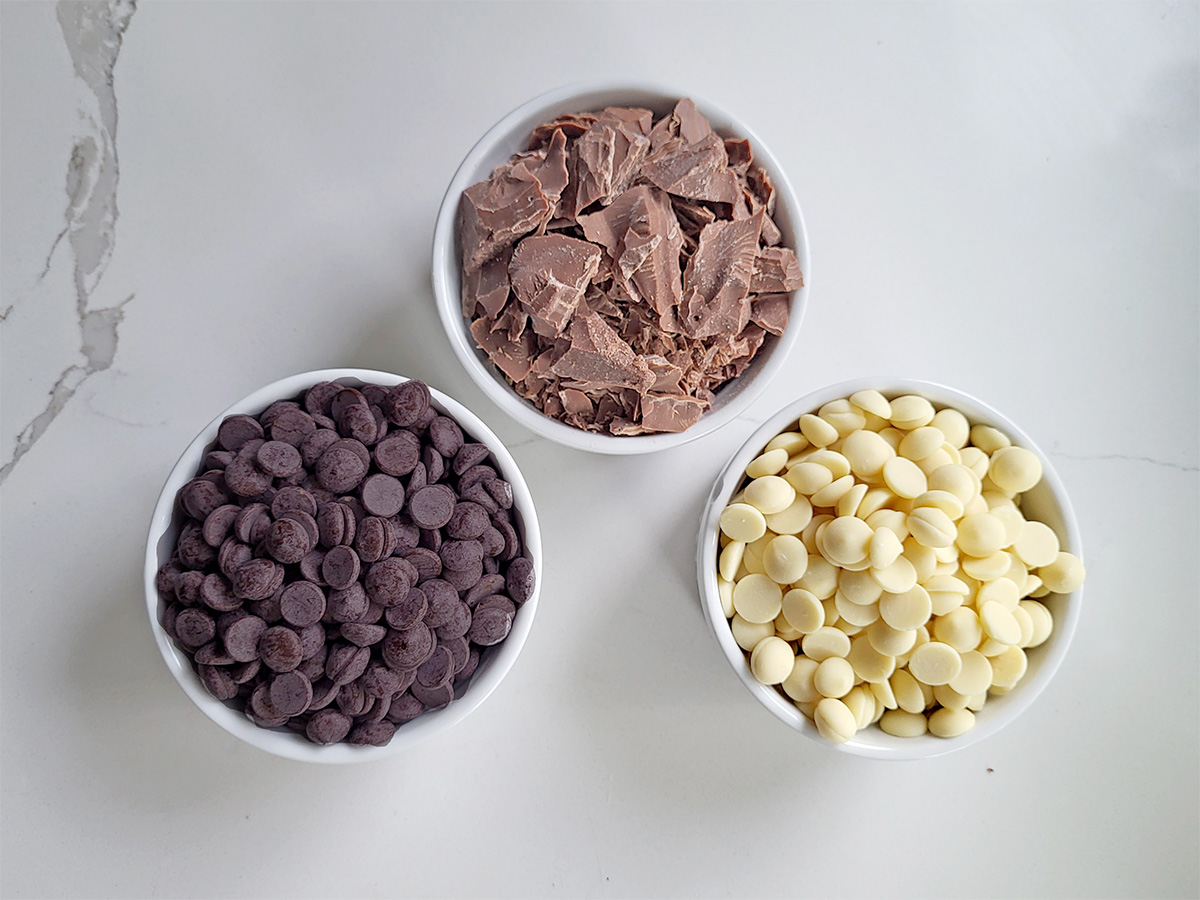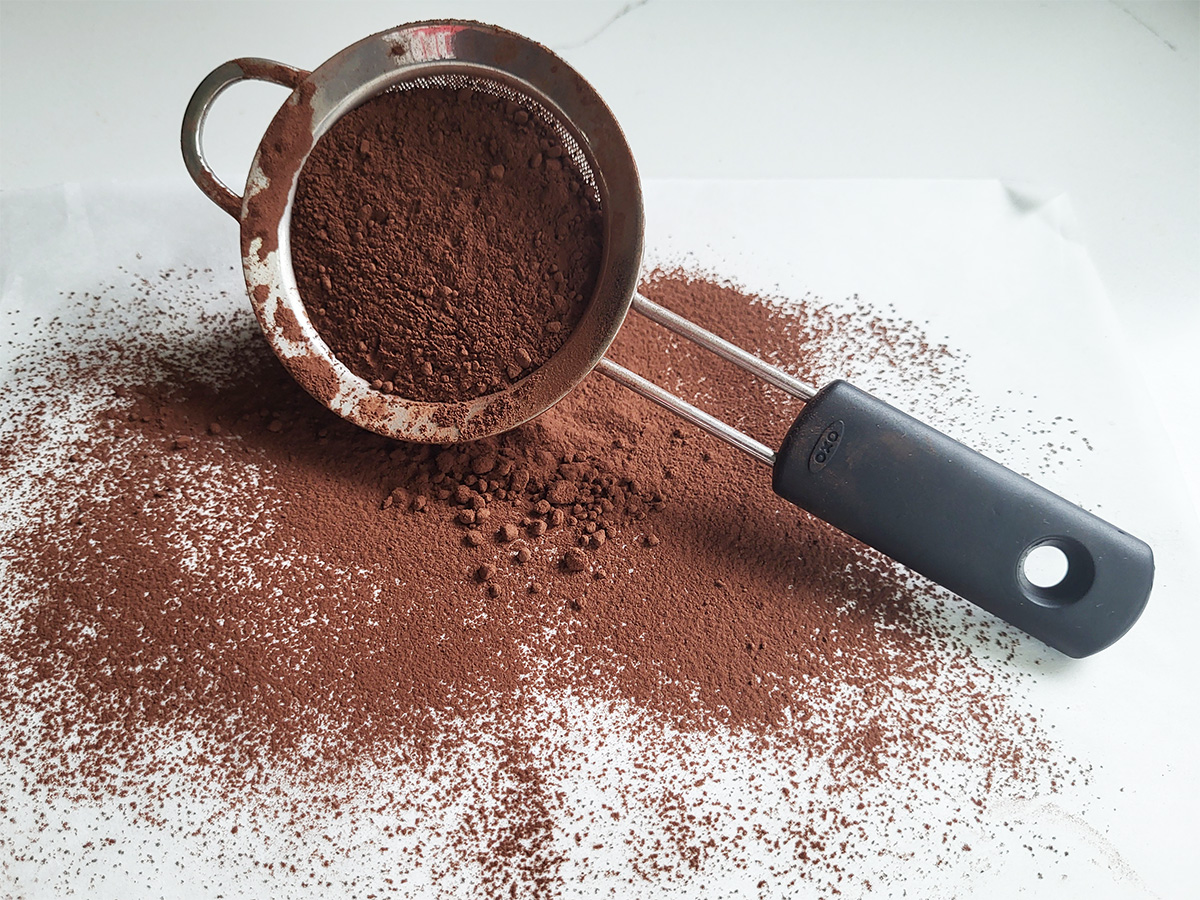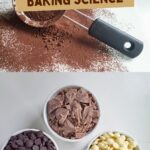🍫 Bakers’ Guide to Chocolate & Cocoa
Chocolate contributes happiness to our lives and flavor, fat and sometimes sugar to baked goods.
It’s one of baking’s most fascinating ingredients: made from the bitter seed of a tropical tree, yet transformed through fermentation and roasting into something rich, flavorful, complex and amazingly versatile in kitchen.
Because the fat in chocolate (cocoa butter) melts at exactly body temperature, it’s snappy and glossy at room temperature and meltingly smooth in your mouth.
In baking, chocolate contributes not just taste but also structure, moisture, and tenderness — depending on whether it’s used as solid chocolate, cocoa powder, or both.
There’s a reason it’s called the “food of the gods”.

Table of contents
About Chocolate
The cacao tree produces pods filled with beans surrounded by sweet-tart pulp.
After harvesting, the beans and pulp ferment in the heat — a process that begins the transformation from bland bean to flavorful chocolate we all know and love. The beans are then roasted to unlock and deepen their complex flavors.
During roasting, sugars and amino acids interact through the Maillard reaction — a process similar to browning in baked goods (see Sugar in Baking for more on this chemistry).
Once roasted, the beans are cracked open to release nibs, which are ground into cocoa liquor — a paste made of cocoa solids suspended in cocoa butter.
At this point the cocoa liquor can either become cocoa powder or chocolate.
How Chocolate is Made
To make dark chocolate, cocoa liquor is combined with sugar and refined through conching — a process that smooths the texture and balances flavor.
Milk chocolate includes milk solids for a milder flavor.
White chocolate contains no cocoa solids at all; it’s made from cocoa butter, sugar, and milk solids.
Understanding how chocolate is processed helps explain why different types behave differently in baking — particularly when melted or combined with liquids or fats.
What Chocolate Percentage Means
The percentage printed on a chocolate bar refers to the total cocoa content — the sum of cocoa solids and cocoa butter. The higher the percentage, the more intense (and less sweet) the chocolate.
A 70% bar has more cocoa solids and less sugar than a 60% bar.
When developing recipes, using chocolate with a consistent cocoa percentage ensures the right sweetness and texture.
Semisweet vs. Bittersweet vs. Unsweetened Chocolate
- Semisweet chocolate: 35%–65% cocoa
- Bittersweet chocolate: 65%–90% cocoa
- Unsweetened chocolate: 100% cocoa solids, no added sugar
The balance of cocoa solids and sugar affects both structure and spread in baked goods — especially cookies and brownies.
Chocolate Substitutions
You can generally swap semisweet and bittersweet chocolate without affecting texture. However, do not substitute chocolate chips for chopped chocolate. Chips contain stabilizers that prevent smooth melting.
Avoid swapping milk and dark chocolate unless the recipe specifies; milk solids add sweetness and moisture that can change baking results.
To replace:
- 1 oz unsweetened chocolate → 3 Tbsp cocoa + 1 Tbsp butter or shortening
- 1 oz semisweet chocolate → 3 Tbsp cocoa + 1 Tbsp butter or shortening + 1 Tbsp sugar
Baking Sense Tip
The fat content of chocolate behaves just like butter in a recipe — too much can soften structure. Learn how different fats influence texture in the Fats in Baking guide.
Chocolate Tempering
When melted chocolate cools and sets, the cocoa butter forms crystals. Proper “tempering” ensures those crystals are uniform, producing chocolate that’s glossy, firm, and snaps cleanly. Tempering is essential for chocolate decorations, dipped truffles, or any project where shine and texture matter.
Visit this detailed tutorial to see how to temper dark, milk or white chocolate.
Storing Chocolate
Store chocolate in a cool, dark pantry — not the refrigerator. In the proper environment, chocolate will keep for several months.
If chocolate warms and then cools, cocoa butter can bloom on the surface, forming a pale, powdery layer.
Bloomed chocolate is harmless and still perfectly usable for baking.
About Cocoa Powder
Cocoa powder is made by pressing cocoa liquor to remove most of the cocoa butter. The dry cake that remains is ground into powder.
Because there’s very little cocoa butter and no added sugar or milk solids, cocoa powder is the most concentrated form of chocolate we use in the kitchen. Cocoa imparts a deep chocolate flavor to many baked goods.
Because cocoa powder contains starch and protein — much like flour — it contributes both flavor and structure to baked goods.
To adapt a recipe:
Replace about 2 oz of flour with 2 oz of cocoa to convert a vanilla cake into chocolate (for example, 9 oz flour → 7 oz flour + 2 oz cocoa).
👉 Learn how starch and gluten form structure in Flour in Baking.

Natural vs. Dutched Cocoa Powder
- Natural cocoa: lighter in color, acidic, and used when baking soda is the leavening agent.
- Dutched cocoa: treated with an alkali to neutralize acidity, creating a darker color and milder flavor.
You can’t always substitute one for the other — their acidity affects how leavening agents react (see Salt and Chemical Leavening for more on this).
Storing Cocoa Powder
Store cocoa powder in a cool, dry and dark place like a pantry or cabinet. Properly stored, cocoa powder will last for several years.
📘 Continue Learning
This page is part of my Baking Ingredient Science series, where I explain how each ingredient affects texture, flavor, and structure in baking.
Explore more ingredient guides:
- Flour in Baking – structure and gluten formation
- Sugar in Baking – sweetness, tenderness, and moisture
- Fats in Baking – richness and flakiness
- Eggs in Baking – structure and emulsification
- Salt in Baking – balance and control
- Chemical Leavening in Baking – rise and aerate
- Yeast in Baking – fermentation and flavor

